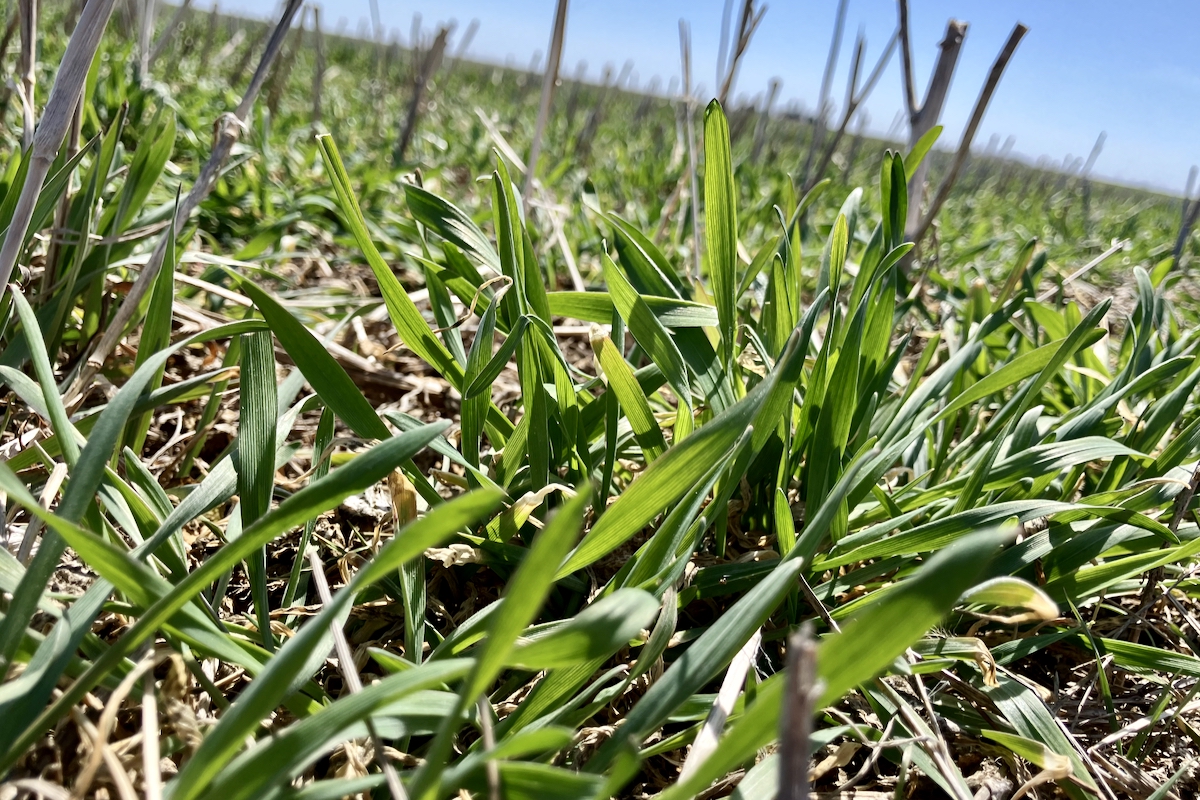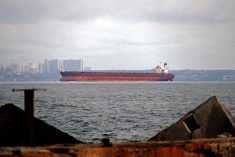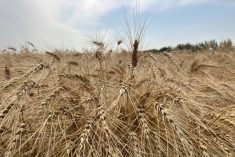Ukraine’s agriculture is diverse, and so is the equipment you can find on Ukrainian farms.
For example, near my town, a German-made NEXAT transformer unit is working in the fields. It’s a massive ‘all-in-one’ machine that handles every step in crop production: spring cultivation, seeding, crop protection and harvesting–and one of only a few in the world.
While this is the cutting edge, you’ll also find many farms with equipment that would be familiar to Canadian farmers: huge powerful tractors and combines, super-technological 24-row planters, self-propelled sprayers and many other modern agricultural machinery.
But in the nearby machine yard of the farm, just in case, there are old, rusted agricultural machines, some of which probably saw the Caribbean Crisis (as we call the Cuban Missile Crisis).

Thrifty
The Ukrainian peasant is very reluctant to get rid of old things. Based on habits inherited from distant ancestors, he or she believes that they can still be useful. Personally, I also have this habit hidden somewhere deep inside me. I, without understanding why, carefully keep at home giant chains for cattle, antlers for putting pots in the oven, rockers for buckets, and even a flail with which my ancestors threshed grain.
Farmers who cultivate relatively small tracts of land, by Ukrainian standards, still use old equipment. When you see such “veterans” in the field or on the road, you generally wonder how such equipment can be started and driven. People don’t want to spend money (or don’t have money to spend) on new agricultural machines.
Read Also

Ukraine sees bigger 2026 winter grain area despite slow start to sowing
Ukrainian farmers plan to increase the 2026 winter grain sowing area to 5.43 million hectares (13.4 million acres) from 5.24 million in 2025, the Economy Ministry said on Tuesday, though dry soils in some areas mean planting has got off to a slow start.
The technical arsenal of farmers who cultivate small acreages is extremely varied. They have small tillers to which trailers are attached, and tiny, sometimes homemade, tractors. Sometimes you can even see a small field being plowed with the help of horses. We still have horse-drawn carts, although this is rare. In my town, there is only one horse left. My friend keeps him at home as a pet. In his youth, my friend worked at a stable and retained his love for horses.
Limping along
The villagers repair all this old agricultural machinery on their own and look for spare parts for it from old stocks. Thanks to this, we still have many people who can fix tractors, trucks, motorcycles, and anything else. Hundreds and thousands of small repair enterprises operate throughout Ukraine, mostly on the farms. Some of them can also create new designs: harrows, cultivators, liquid fertilizer barrels, and trailers.
It might seem like a primitive thing, tied to the past, but in 2014 when Crimea was invaded by Russia, it showed that such a network was valuable and needed.
At the time Ukraine had thousands of units of military equipment, but most of it was in storage and in bad condition. Military trucks, tractors, and infantry fighting vehicles all needed repair. Farmers helped restore them. No one forced them to do this. Farmers repaired military vehicles with their own money, and also provided their own machinery–trucks, excavators, even tractors.
The start of a full-scale war in 2022 raised new challenges for Ukrainian society.
On the one hand, we urgently need high-precision weapons–anti-aircraft defense, long-range missiles, modern tanks, airplanes and helicopters. This allows you to effectively destroy the enemy, minimizing the loss of your soldiers. But on the other hand, war is not a movie in which your army wins beautifully. It is constant exhausting work, it is fatigue, it is blood and sweat–and also countless small stories.
Basic needs
You need to bring food, ammunition and various equipment to the soldiers. You need to evacuate the wounded from the battlefield, transport fuel, and transport soldiers closer to the front line. You must transport goods across the country, build fortifications, demine fields and roads–many, many things. The success of your country’s defense against the enemy largely depends on how successfully you deal with these logistical and economic challenges. And so depends your life and the lives of those you care for.
That is why many Ukrainians voluntarily gave money to purchase cars for the army–jeeps, trucks, minibuses, and also various engineering equipment. This is the lifeblood of the country’s defense system. Over the past 20 months, hundreds of thousands of vehicles have passed through the crucible of war. A significant part of them have then turned into scrap metal, having fulfilled their main mission–to help save human lives.
It is difficult to imagine from which hiding places Ukrainian volunteers pull out these vehicles from all over Europe. Most often, these are old SUVs that need repair. They can be purchased for a few dollars, then repaired and sent to the front. The duration of the life of such cars can wildly varied. Sometimes it literally takes two or three hours, because the car can immediately come under fire or hit a mine and be destroyed.
Then there’s the kind of work the vehicles do, mostly near the front line. Military, unofficial volunteers, medics, they all drive through mud and over hills, often at breakneck speed because even a moment’s delay can cost lives. Having a reliable jeep can frequently be more important than even a tank.

Deep support
Every time I talk to another Ukrainian farmer, I know that when I ask how they are supporting the army, they will respond they have transferred several trucks from their company to our defenders. This is a sign of good morale and Ukrainian farmers consider it their duty. Most of them are not limited to this. They actively look for and then buy cars abroad: pickup trucks, jeeps, minibuses, trucks, that is, everything that can drive in extreme conditions.
In addition, some farmers independently make small buggies for the military, using spare parts from old cars. These designs can be quite interesting, but so far they are still few and far between.
Sometimes cars that have been in the war drive into our relatively peaceful town. They have a shocking appearance. They are riddled with shell fragments and have holes from automatic bullets. They can be so dirty that it is not clear what colour they are. But external beauty is not the main thing for them. These are cars that save human life.
Internal sources
In the 1990s, mass production of domestic vehicles neared extinction in Ukraine, a loss we our feeling deeply now. Our factories produced simple cars and trucks, which were not distinguished by reliability, but they were cheap and easy to repair.
As the experience of the war has shown, now we could really use tens of thousands of domestically produced mini SUVs and any trucks that could meet the needs of the army. It is better than looking for old cars of different models from all over the world.
I can say the same about the national production of agricultural machinery. Although our farmers are already used to the machinery of the best global brands, it is very good that Ukraine produces its own planters, cultivators, sprayers and other agricultural machinery. During the war, it makes it possible to continue to purchase and repair machines for work in the field.
Globalization may work in times of peace, but during times of war a country wants to have the factories that produce those things.
— Ihor Pavliuk is a Ukrainian agricultural journalist.
Updated Nov. 15 – more photos added.











